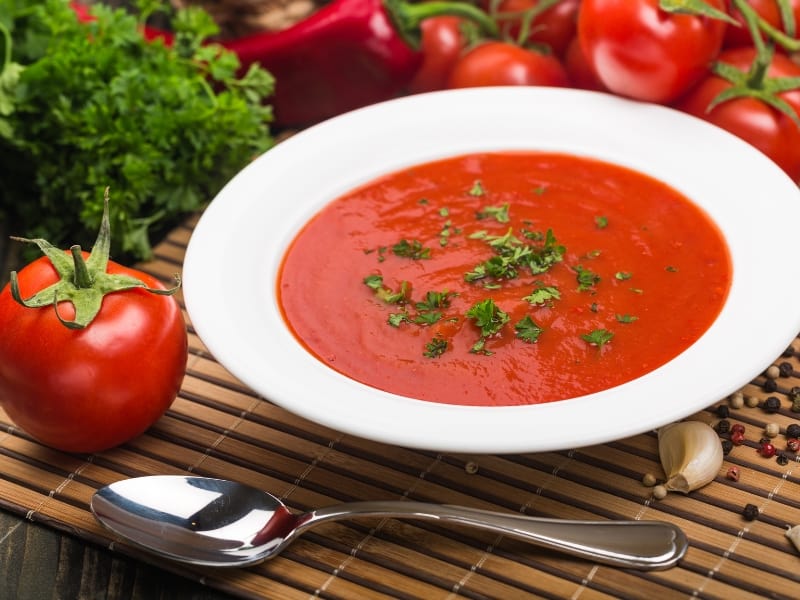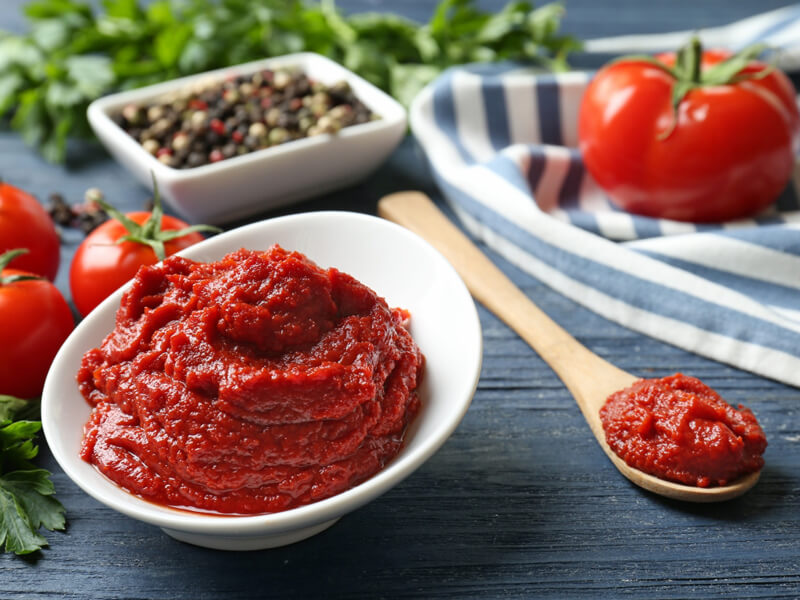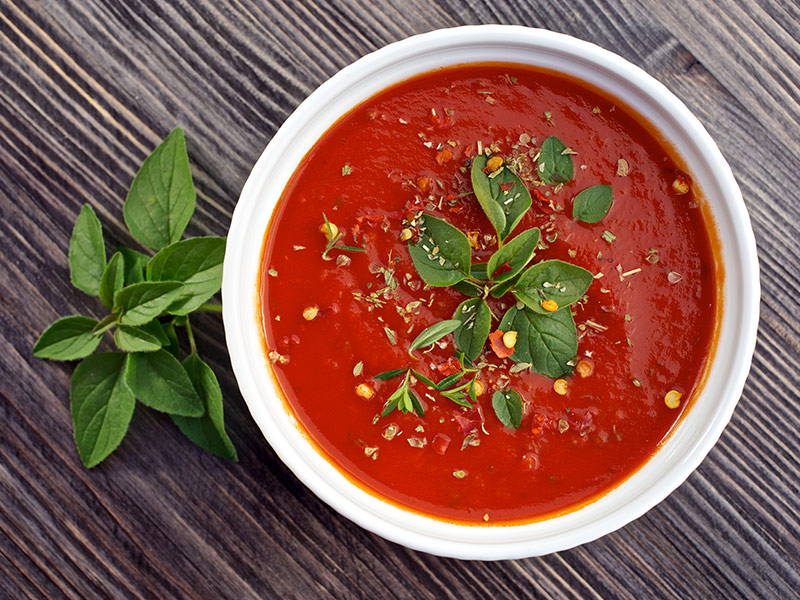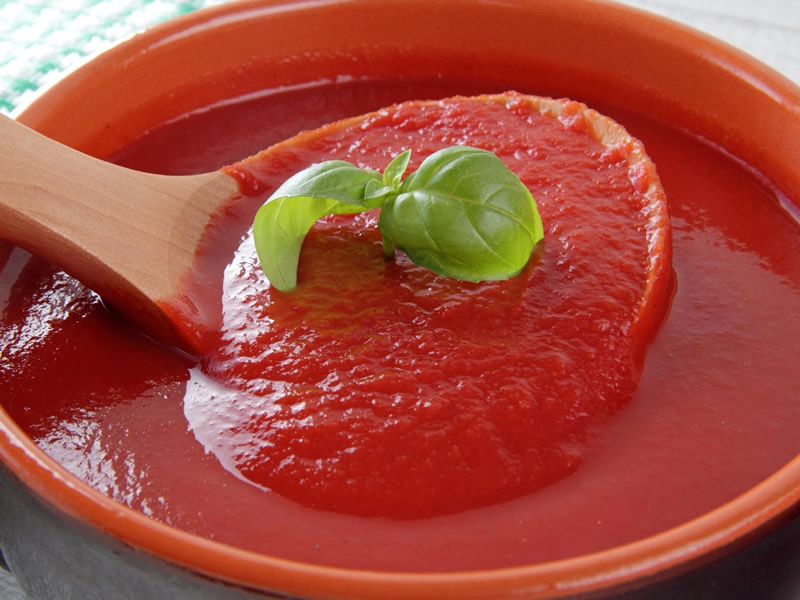The Wonderful World of Tomato Paste and Sauce: A Comprehensive Overview
Introduction:
In the culinary world, tomato-based products like tomato paste and sauce have become ubiquitous ingredients due to their versatility and rich flavor profiles. Whether used as a base for pasta sauces, soups, or stews, or as a condiment to enhance the taste of various dishes, tomato paste and sauce have become staples in kitchens around the globe. This article aims to provide a comprehensive overview of tomato paste and sauce, highlighting their history, production process, nutritional value, and various uses.
I. Understanding Tomato Paste and Tomato Sauce:
1. Tomato Paste:
– Tomato paste is a thick, concentrated form of tomatoes that is made by reducing fresh tomatoes through cooking, straining, and removing the skin and seeds.
– It is highly concentrated, containing little to no water, resulting in a deep and intense tomato flavor.
– Tomato paste is typically sold in small cans or tubes and is available in both regular and double-concentrated forms.
2. Tomato Sauce:
– Tomato sauce is a thinner variant of tomato paste, typically made from a combination of chopped or crushed tomatoes, herbs, spices, and sometimes additional ingredients like onions and garlic.
– It possesses a smoother consistency and is often used as a base for pasta sauces, pizzas, and other tomato-based recipes.
– Tomato sauce is commonly available in cans, jars, or tetra packs, providing convenience for consumers.
II. Production Process of Tomato Paste and Sauce:
1. Tomato Paste Production:
– The production of tomato paste typically involves several steps, including sorting, washing, peeling, crushing, and concentrating the tomatoes.
– Afterward, the tomato puree undergoes an evaporation process to remove excess moisture, resulting in a thick and concentrated paste.
– Some producers use a vacuum evaporator, which reduces the cooking time and helps retain the nutritional properties and flavor.
– Tomato paste is commonly packed into cans or tubes, ensuring its long shelf life and easy storage.
2. Tomato Sauce Production:
– Tomato sauce manufacturing involves the selection of high-quality tomatoes, which are blanched, peeled, and pureed.
– Additional ingredients such as onions, garlic, herbs, and spices are added to enhance the flavor and taste profile of the sauce.
– The sauce is then cooked and simmered to achieve the desired consistency and flavor infusion.
– Afterward, it is packaged into cans, jars, or tetra packs for commercial sale or left as a fresh product for immediate consumption.
III. Nutritional Value and Health Benefits:
1. Nutritional Profile:

– Both tomato paste and sauce are low in calories and fat, making them suitable for individuals looking to maintain a healthy diet.
– They are rich in vitamins A, C, and K, as well as antioxidants like lycopene, which has been associated with various health benefits, including reduced risk of chronic diseases.
– Tomato paste and sauce also contain significant amounts of minerals such as potassium and magnesium, which are essential for optimal bodily functions.
2. Health Benefits:
– Lycopene, a carotenoid pigment responsible for the red color of tomatoes, has been linked to a reduced risk of certain cancers, cardiovascular diseases, and age-related macular degeneration.
– The high potassium content in tomato paste and sauce helps regulate blood pressure levels and supports healthy heart function.
– Additionally, the presence of dietary fiber in tomato sauce aids in digestion and contributes to a healthy digestive system.
IV. Culinary Uses of Tomato Paste and Sauce:
1. Cooking Applications:
– Tomato paste serves as an excellent base for various culinary creations such as pasta sauces, stews, soups, and casseroles, providing a concentrated flavor and rich color.
– It can also be diluted with water or broth to create a tomato base for pizzas, marinades, or dressings.
– Tomato sauce is a versatile ingredient used in numerous classic dishes such as spaghetti Bolognese, lasagna, and chili con carne, as well as a topping for pizzas and sandwiches.
2. Flavor Enhancer:
– Tomato paste and sauce add depth and complexity to dishes, enhancing the overall taste profile.
– They contribute a naturally sweet and tangy flavor, balancing out other ingredients, and creating a harmonious combination of flavors.
– Tomato paste has a more concentrated flavor, making it ideal for dishes that require a robust tomato taste, while tomato sauce provides a milder and smoother tomato flavor.
3. Substitutes and Variations:
– Homemade tomato paste can be substituted with tomato sauce or puree, albeit with some adjustments required to achieve the desired flavor and consistency.
– Similarly, tomato sauce can be substituted with canned tomatoes or crushed tomatoes, depending on the recipe’s requirements.
– Different variations of tomato sauce, such as marinara sauce, arrabbiata sauce, and puttanesca sauce, offer unique flavors and can be tailored to individual preferences.
V. Tomato Paste and Sauce in International Cuisines:
1. Italian Cuisine:
– Tomato-based products play a crucial role in Italian cuisine, with tomato paste and sauce forming the backbone of many traditional dishes.
– From classic pasta sauces like marinara and Bolognese to famous recipes like pizza Margherita, tomatoes are celebrated in various Italian delights.
2. Mediterranean Cuisine:
– Mediterranean cuisines, including Greek, Spanish, and Lebanese, incorporate tomato paste and sauce into a wide array of traditional dishes.

– Mediterranean recipes such as the Greek moussaka, Spanish paella, and Lebanese shawarma often rely on the rich tomato flavors provided by these versatile ingredients.
Conclusion:
Tomato paste and sauce are essential ingredients in kitchens around the world, prominently used for their intense flavor, nutritional value, and culinary versatility. These tomato-based products offer numerous health benefits, including their richness in antioxidants and valuable vitamins. Whether being used as a base for pasta sauces, soups, or stews, or as a flavor-enhancing condiment, tomato paste and sauce bring depth and complexity to any dish. So, whether you’re an aspiring chef or a home cook, embracing the wonders of tomato paste and sauce can elevate your culinary repertoire to new heights.I. Market Overview:
The tomato paste and sauce market has witnessed steady growth in recent years due to the increasing popularity of convenience foods, the rise in demand for ready-to-use products, and the growing preference for healthier food options. According to a report by Grand View Research, the global tomato paste market size was valued at $2.65 billion in 2020, and it is projected to reach $3.98 billion by 2028, growing at a compound annual growth rate (CAGR) of 5.2% from 2021 to 2028.
II. Key Players and Competition:
The tomato paste and sauce market are highly competitive, with both international and regional players vying for market share. Some of the key players in this industry include The Kraft Heinz Company, Conagra Brands Inc., Del Monte Foods Inc., Red Gold Inc., and Grupo Penaflor, among others. These companies invest heavily in product development, quality control, and marketing strategies to maintain their market positions. Additionally, they focus on building brand equity and enhancing distribution networks to cater to a wide customer base.
III. Market Segmentation:
The tomato paste and sauce market can be segmented based on product type, packaging format, distribution channel, and geography.
1. Product Type:
– Tomato paste: Regular, double-concentrated, and triple-concentrated.
– Tomato sauce: Traditional, flavored, and organic.
2. Packaging Format:
– Cans: Metal cans with different sizes.
– Glass jars: Various sizes to cater to different consumer needs.
– Tetra packs: Convenient on-the-go packaging.
3. Distribution Channel:
– Supermarkets and hypermarkets
– Convenience stores
– Online retail platforms
IV. Market Trends and Innovations:
1. Organic and Clean Label Products:
– With the growing consumer demand for healthier and natural food options, there has been an increase in the production and availability of organic tomato paste and sauce.
– Manufacturers are also focusing on clean label products that contain minimal additives, preservatives, or artificial ingredients.
2. Flavor Innovations:
– To cater to diverse consumer preferences, companies are introducing flavored tomato sauces with added herbs, spices, or even ethnic flavors.
– These innovative products offer unique taste experiences and open up new culinary possibilities.

3. Sustainable Packaging Solutions:
– The industry has witnessed a rising trend towards sustainable packaging formats, such as recyclable or biodegradable materials, to address environmental concerns.
– Companies are actively investing in eco-friendly packaging alternatives to reduce their carbon footprint.
V. Distribution Channels:
The distribution of tomato paste and sauce is predominantly through supermarkets and hypermarkets, which offer a wide range of brands and packaging options. Convenience stores also play a significant role in the distribution, ensuring availability for on-the-go consumers. In recent years, the e-commerce sector has gained traction, with online retail platforms providing convenience and accessibility, particularly for niche and specialty products.
VI. Regional Analysis:
1. North America:
– North America accounts for a significant market share in the tomato paste and sauce industry, driven by the high consumption of processed foods and the popularity of Italian cuisine.
– The United States, Canada, and Mexico are the major contributors to the growth in this region.
2. Europe:
– Europe is a prominent market for tomato paste and sauce, with countries like Italy, Spain, and Greece leading in both consumption and production.
– The demand for organic and clean label products is on the rise in the European market.
3. Asia-Pacific:
– The Asia-Pacific region, particularly countries such as China and India, is witnessing significant growth in the tomato paste and sauce market due to the increasing population, urbanization, and changing dietary habits.
– The demand for convenience foods and the influence of Western cuisines contribute to the market growth.
VII. Challenges and Opportunities:
1. Supply Chain Disruptions:
– Adverse weather conditions, such as droughts and floods, impact tomato crops and can result in supply chain disruptions, affecting the availability and prices of tomato paste and sauce.
– Manufacturers need to have contingency plans and strong supplier relationships to mitigate such risks.
2. Rising Health Concerns:
– Despite the health benefits associated with tomato-based products, consumer concerns regarding sodium content, added sugars, or other additives pose challenges for manufacturers.
– Developing low-sodium and low-sugar options and promoting the nutritional attributes of tomato paste and sauce can help address these concerns.
3. Expanding Market Opportunities:
– The increasing popularity of ethnic cuisines, growing demand for convenience foods, and rising health consciousness create opportunities for market growth.
– Expanding into emerging markets, introducing innovative product variations, and emphasizing sustainability can further fuel business opportunities.
VIII. Regulatory Landscape:

The tomato paste and sauce industry are subjected to various regulations and standards to ensure food safety, quality, and labeling transparency. Regulatory bodies such as the Food and Drug Administration (FDA) in the United States and the European Food Safety Authority (EFSA) in the European Union oversee compliance with food safety regulations, including labeling requirements, permissible additives, and maximum residue limits for pesticides.
IX. Conclusion:
Tomato paste and sauce have become indispensable ingredients in the culinary world, valued for their rich flavor profile and versatility. The market for tomato paste and sauce continues to grow, driven by changing consumer preferences, innovative product offerings, and expanding distribution channels. Manufacturers need to focus on quality, sustainability, and innovation to stay competitive in this dynamic industry. As consumer demand for healthier, flavorful, and convenient food options continues to increase, the future looks promising for the tomato paste and sauce market.









